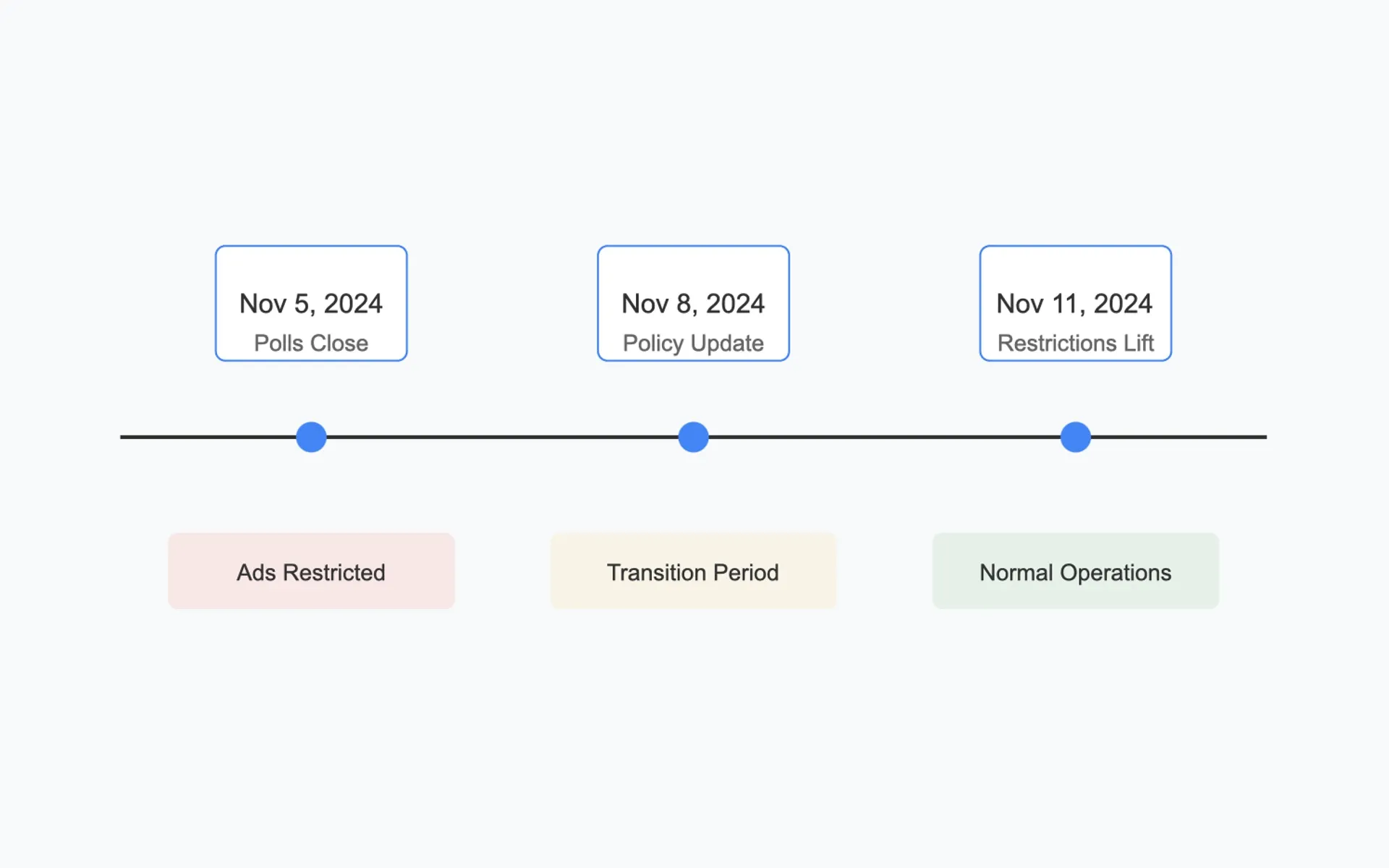Google lifts US Election Ad restrictions following November 5 vote count
Google announces resumption of US election-related advertising on November 11, following temporary pause after polls closed.

On November 8, 2024, Google announced the lifting of temporary restrictions on US election-related advertising. According to Google's Merchant Center documentation, the restrictions will be lifted on November 11, 2024, allowing advertisers to resume campaigns related to US elections, their processes, and outcomes.
The temporary pause, which began after the last polls closed on election day, November 5, 2024, affected two main categories of advertisements: US Election Ads and general advertisements referring to US elections. The policy change marks a significant shift in Google's advertising landscape, particularly for political campaigns, parties, and organizations involved in election-related communications.
According to Google's Political Content policy documentation, US Election Ads encompass advertisements featuring current officeholders or candidates for elected federal offices, including positions such as the President, Vice President, and members of Congress. The policy also covers state-level elected offices, U.S. territory-level positions, federal and state political parties, and state or territory-level ballot measures.
Public information campaign advertisements run by state or federal government bodies responsible for administering election processes were exempt from the temporary restriction.
Technical framework and verification requirements
Election Ad Verification Process
The political advertising framework established by Google requires strict verification processes. Advertisers must complete specific verification procedures to run election-related advertisements. For US Election Ads targeting American audiences, advertisers must undergo US Election Ads verification.
Targeting Restrictions
Google maintains strict targeting criteria for election advertisements. The permitted targeting options include:
- Geographic location (excluding radius around a location)
- Age and gender demographics
- Contextual targeting options, such as ad placements, topics, and keywords against sites, apps, pages, and videos
Disclosure Requirements
The platform mandates clear disclosure requirements for election advertising. All election advertisements must contain a "Paid for by" disclosure identifying the funding source. Google automatically generates these disclosures for most ad formats using information provided during the verification process.
Historical context and regional implementation
Google's approach to political advertising reflects a broader industry trend toward transparency and regulation in political communications. The company's political content policies extend beyond the United States, with specific requirements for various regions including Argentina, Australia, the European Union, and the United Kingdom.
The temporary restriction period following the November 5 election represents a established practice in digital political advertising. This approach aims to prevent potential misinformation during the sensitive period of vote counting and result certification.
State-specific restrictions add another layer of complexity to the political advertising landscape. For instance, California requires committees to provide express notification before purchasing online platform disclosed advertisements. Maryland, Nevada, and Washington maintain restrictions on certain state and local election advertisements.
Impact and significance of the policy update
The resumption of election-related advertising carries significant implications for political communication and digital marketing strategies. This policy change affects:
- Political campaigns requiring post-election communication
- Organizations involved in election result analysis and commentary
- Advocacy groups addressing election outcomes
- State and local government communications about election results
The timing of the restriction lift, six days after the election, suggests a calculated approach to managing political discourse during the critical post-election period.
Key Facts
- Announcement Date: November 8, 2024
- Implementation Date: November 11, 2024
- Restriction Period: November 5-11, 2024
- Geographic Scope: United States
- Affected Content: US Election Ads and election-related advertising
- Required Verification: US Election Ads verification for domestic targeting
- Exempt Content: Government election process information campaigns

